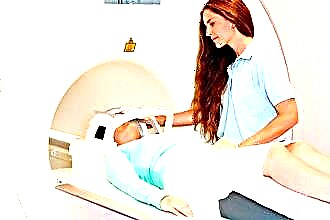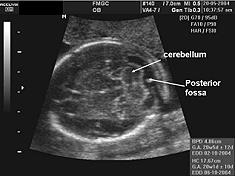Violation of nasal breathing is one of the most painful symptoms of diseases of the upper respiratory system; this sign is present both in the clinical picture of rhinitis and among the manifestations of sinusitis. Both of these pathologies can occur in an acute or chronic form, most often they have an infectious etiology, are accompanied by similar symptoms and can occur simultaneously - but at the same time they are completely different nosological units. To understand what is the difference between rhinitis and sinusitis, it is necessary to know the causes of the development of diseases, to have an idea of the anatomical localization of pathological changes.
Basic concepts
 Rhinitis and sinusitis are diseases with an extremely high prevalence; they are found in patients of different age groups and can have a varied etiological basis. Before proceeding to describe the differences between them, it is necessary to mention the features of the anatomical structure of the nose.
Rhinitis and sinusitis are diseases with an extremely high prevalence; they are found in patients of different age groups and can have a varied etiological basis. Before proceeding to describe the differences between them, it is necessary to mention the features of the anatomical structure of the nose.
The nasal cavity, lined with a mucous membrane, has three walls and two halves, separated by a nasal septum. Paired paranasal sinuses, or sinuses, communicate with it - they are sometimes also called accessory nasal cavities:
- maxillary;
- frontal;
- lattice;
- wedge-shaped.
The nasal cavity and paranasal sinuses are different anatomical areas, therefore, it is unacceptable to consider the concepts of "rhinitis" and "sinusitis" as synonyms.
However, in some cases, a combined course is possible - the simultaneous presence of signs of each of the pathologies in the patient. In this case, they speak of rhinosinusitis. Primary inflammation in the nasal mucosa can lead to sinusitis as a secondary disease.
Classification
Anatomical localization of the inflammatory process is the main, but not the only difference between the pathology of the nasal cavity and the pathology of the sinuses. The classifications used in clinical practice are different. Although when discussing any type of inflammation, both the nature of the course (acute, chronic) and the pathogenetic variant (catarrhal, purulent process) are important, there are features for both rhinitis and sinusitis.
So, inflammation of the nasal mucosa is considered primarily in accordance with the etiology. Rhinitis can be infectious (viral, bacterial, less often fungal), non-infectious (allergic, vasomotor). This determines not only the tactics of treatment, but also the range of preventive measures - for example, the need for a hypoallergenic diet, ASIT (allergen-specific immunotherapy).
The type of course of the process is also important - chronic forms of rhinitis (catarrhal, hypertrophic, atrophic) have significant differences from acute infectious inflammation. The lesion is usually bilateral (excluding traumatic rhinitis), the nasal mucosa is involved in the pathological process without isolating individual anatomical structures and areas.
If we are talking about inflammation in the area of the paranasal sinuses, it is necessary to understand that sinusitis is a collective, generalizing concept. It is most often used if a non-infectious process is suspected (for example, of an allergic nature). Inflammation of a specific sinus is denoted by the corresponding term, which is used in practice to formulate the diagnosis of an infectious-inflammatory disease. Allocate the defeat of the sinuses:
- Maxillary (sinusitis).
- Frontal (frontal).
- Lattice (ethmoiditis).
- Wedge-shaped (sphenoiditis).
In this case, it matters whether one sinus or a pair of sinuses is affected on both sides, or several different sinuses are inflamed. Therefore, the disease can also be classified:
- as hemisinusitis (damage to all paranasal sinuses at the same time - with only one side);
- as polysinusitis (damage to several sinuses at the same time);
- like pansinusitis (all sinuses are inflamed, without exception).
Thus, rhinitis in most cases is a bilateral process, and with sinusitis, unilateral inflammation of various paranasal sinuses is possible.
Symptoms, tactics of therapy
Thinking about how rhinitis differs from sinusitis, one should not forget about the characteristics of the clinical picture, the features of treatment. Although there are many common signs, upon a detailed examination of the disease, they manifest themselves in different ways, require different treatment tactics, which can be explained using several comparative criteria.
The severity of the disease
It is believed that rhinitis is much easier to carry than sinusitis of any localization. Of course, this statement cannot be absolutely accurate: there are chronic forms of inflammation of the nasal mucosa (for example, atrophic rhinitis), the symptoms of which are very painful for the patient. However, when assessing the severity of the course of the acute form of rhinitis and the acute form of sinusitis of infectious etiology, the threat to life is assessed, therefore the second disease is still much more dangerous. The penetration of infection into the sinuses indicates a lack of protective mechanisms (including mucociliary clearance), the likelihood of immunodeficiency.
Leading symptoms
And with rhinitis, and with sinusitis, there is a release of pathological secretions and a violation of nasal breathing. However, a runny nose does not always accompany sinusitis: this may be due to blockade of the anastomosis of the affected sinus. In addition, a typical manifestation of sinusitis is a headache with a specific localization (for example, within the upper jaw with sinusitis), which is characterized by periodicity (intensification at certain hours), may decrease or remain unchanged as a result of the use of vasoconstrictor drugs.
Intense headache against the background of impaired breathing through the nose is a classic symptom of sinusitis and requires a more accurate diagnosis even in the presence of clear signs of rhinitis.
Violation of the general condition
 The syndrome of general infectious intoxication occurs with any inflammatory process of an infectious nature. If rhinitis appears as a symptom of ARVI (acute respiratory viral infection), intoxication syndrome can be extremely pronounced and includes weakness, headache, a significant increase in body temperature. However, with isolated rhinitis, fever is often subfebrile, it may not be present at all, and the degree of impairment of the general condition remains moderate. In acute sinusitis, fever can reach both subfebrile and febrile values, the general condition is significantly affected by headache, impaired nasal breathing.
The syndrome of general infectious intoxication occurs with any inflammatory process of an infectious nature. If rhinitis appears as a symptom of ARVI (acute respiratory viral infection), intoxication syndrome can be extremely pronounced and includes weakness, headache, a significant increase in body temperature. However, with isolated rhinitis, fever is often subfebrile, it may not be present at all, and the degree of impairment of the general condition remains moderate. In acute sinusitis, fever can reach both subfebrile and febrile values, the general condition is significantly affected by headache, impaired nasal breathing.
Pharmacotherapy
Rhinitis, as a rule, is not an indication for the systemic administration of antibiotics and other drugs; therapeutic measures are limited to local effects (drops, sprays, ointments). With sinusitis, antibiotic therapy is necessary - drugs are prescribed in the form of tablets, injections, infusions; in severe cases, detoxification therapy is required, which involves the intravenous administration of various solutions.
The need for complex manipulations
With rhinitis (if there is no hypertrophy, severe atrophy), conservative therapy, hygiene measures (regular cleansing of the nasal cavity from pathological secretions) are sufficient, which can be carried out at home. Sinusitis, on the other hand, may necessitate puncture and catheterization of the paranasal sinus, as well as washing with an electric suction.
Additional diagnostics
Laboratory and instrumental diagnostic methods greatly facilitate the tasks of a practicing physician, since they allow confirming or refuting the presence of pathological changes. What is the difference between examination data for rhinitis and inflammation in the sinus area?
 In isolated rhinitis with the help of rhinoscopy, including endoscopic, local changes can be detected: edema, hyperemia, accumulation of pathological secretions, crusts, proliferation of the mucous membrane, etc. During radiography, the paranasal sinuses are not changed.
In isolated rhinitis with the help of rhinoscopy, including endoscopic, local changes can be detected: edema, hyperemia, accumulation of pathological secretions, crusts, proliferation of the mucous membrane, etc. During radiography, the paranasal sinuses are not changed.
- With sinusitis, computed tomography (CT) and X-ray of the paranasal sinuses, performed in different projections, can help in clarifying the diagnosis - these studies belong to imaging methods and can detect signs of inflammation in the sinus area.
- Puncture of the sinus during inflammation can help identify exudate and assess its nature (for example, pus). In addition to visual assessment, a microbiological study (inoculation on nutrient media) is carried out to determine the sensitivity of microorganisms to antibacterial drugs.
X-ray and CT signs of sinusitis are sinus darkening, thickening of its mucous membrane and the presence of a fluid level; they are not typical for rhinitis.
Distinctive signs of inflammation of the nasal mucosa and sinuses suggest a probable diagnosis, but require clarification - it is necessary to conduct an objective examination, the use of additional methods. Suspecting the presence of rhinitis or sinusitis, it is necessary to consult a doctor - even knowing how these diseases differ, one cannot exclude the possibility of an erased, atypical or combined course of the inflammatory process.

 In isolated rhinitis with the help of rhinoscopy, including endoscopic, local changes can be detected: edema, hyperemia, accumulation of pathological secretions, crusts, proliferation of the mucous membrane, etc. During radiography, the paranasal sinuses are not changed.
In isolated rhinitis with the help of rhinoscopy, including endoscopic, local changes can be detected: edema, hyperemia, accumulation of pathological secretions, crusts, proliferation of the mucous membrane, etc. During radiography, the paranasal sinuses are not changed.

